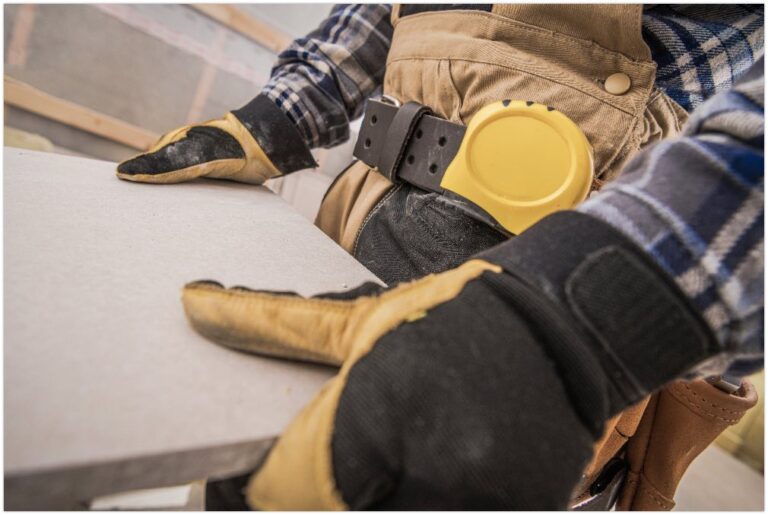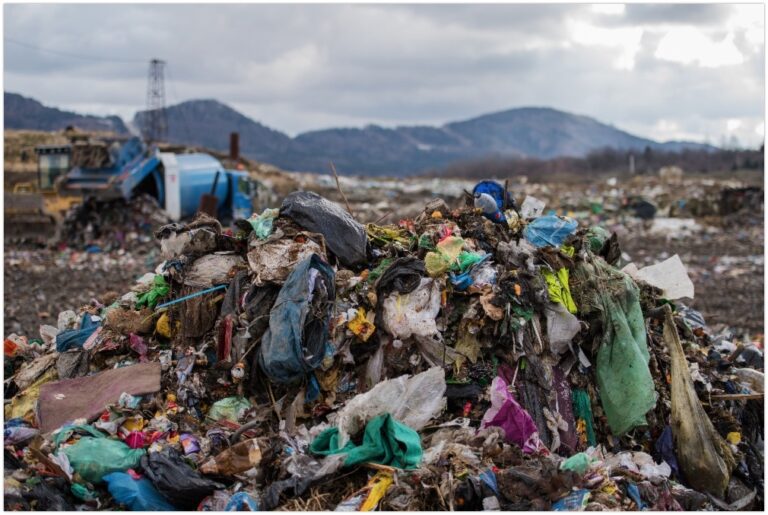Imagine an Australia where lush forests flourish and our unique biodiversity is nurtured. In this blog, we delve into how simple acts like recycling paper and general rubbish are pivotal in crafting this greener reality. By actively engaging in recycling, we combat climate change and conserve essential resources such as energy and water.
At Paul’s Rubbish Removal, we’re committed to making this vision a reality. Here, you’ll discover the environmental benefits of recycling and learn practical steps for making a meaningful difference. Join us in our journey to protect our planet for future generations – because recycling is not just responsible, it’s essential. So let’s start making an impact together, today.
Key Takeaways
- Recycling paper and other materials is essential in preserving forests, mitigating climate change, and conserving energy and water resources.
- Closing the loop of recycling involves reducing waste volume through reusing materials to manufacture new products.
- Practical steps such as proper sorting, repurposing materials and community engagement are key elements in creating a sustainable future.
The Imperative of Recycling: Paper and Beyond
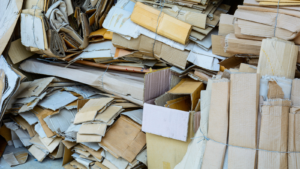
Have you ever considered the journey of a piece of paper? From the moment it’s transformed from a towering tree to the time it’s discarded, each phase of its life tells a story. Yet, the story doesn’t have to end in a landfill. The tale can take a turn towards sustainability through recycling.
Recycling paper gives it a second life, turning it into fresh paper products made of recycled paper. This not only prevents waste but also conserves resources and shrinks the manufacturing process’s carbon footprint. This fairy-tale-like rebirth of paper illustrates the benefits of paper recycling, such as waste reduction and environmental conservation.
However, not all paper types are suitable for recycling. Shredded paper, heavy glossy pages of magazines, and wrapping paper adorned with glitter can present challenges for recycling facilities. Nevertheless, alternatives exist. Shredded paper not accepted in regular recycling can be taken to a nearby paper recycling facility or entrusted to a private company for proper disposal, thereby reducing the need to produce paper from virgin materials.
Preserving Our Natural Bush and Wildlife
Recycling paper plays a pivotal role in forest conservation. Consider a tree, a beacon of life supporting countless organisms. When a tree is felled for paper manufacturing, not only is a life lost, but a habitat is destroyed too. Each time we recycle paper, we diminish the requirement for new trees to be felled, thereby safeguarding forests and the biodiversity they support.
Additionally, recycling curtails the demand for raw materials by making use of already processed materials. This lessens the necessity for extracting new raw materials from the environment, thus preserving precious natural resources. It’s hard to deny the environmental benefits of recycling, a practice that contributes to a more sustainable planet.
Mitigating Climate Change
Despite appearing as a minor act, recycling has significant influence on curbing climate change. Recycling, particularly paper, restricts the use of raw materials and the energy needed for new product production. It also lessens the volume of waste sent to landfills, which emit greenhouse gases as they decompose. By doing so, recycling helps to reduce greenhouse gas emissions.
The paper industry, however, has not always been so environmentally conscious. Traditionally, it has been one of the most significant manufacturing polluters, contributing to increased global energy consumption and emissions. But change is afoot. With the advent of paper recycling, greenhouse gas emissions can be reduced, mitigating climate change.
The Lifecycle of Recycled Materials: What happens to my paper waste?
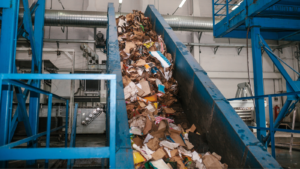
Recycling is a transformative journey that morphs paper waste into a resource. For instance, the journey of a paper piece begins with its collection and separation from other waste, followed by its categorization into groups such as cardboard, magazine paper, newspapers, and office papers. The next stop in this journey is the transformation of waste paper into new products, a process that involves the conversion of waste paper into pulp, followed by a de-inking stage to remove ink, and finally pressing the purified paper pulp into new paper products.
This lifecycle is an ongoing process, a loop that closes when the end product of one process becomes the starting material for the next. Materials move from the collection and sorting phase, to be turned into new products, and once again back to the collection phase, thereby closing the loop.
The Collection and Sorting Process
The first step in recycling is collecting and sorting materials. In Sydney, recyclable items like paper, cardboard, and plastics are collected and taken to recycling facilities. Here, they undergo a crucial sorting process. This involves separating different types of materials – newspapers, magazines, cardboard boxes, and more – to ensure they are processed correctly.
While this process is vital for recycling, it’s not without challenges. Issues can include poor quality of recyclables due to lack of public knowledge, safety concerns for workers, and the cost and efficiency of recycling services.
Recycling Paper to Make Paper
In Sydney, the recycling process not only transforms materials into new products but also plays a crucial role in the renewal cycle of these resources. Once recyclables, such as paper and cardboard, are collected, they embark on a journey of rebirth at recycling facilities.
Here, they are pulped and remanufactured into a variety of new products, including cardboard boxes and packaging materials. The process is inclusive enough to handle even greasy pizza boxes, as long as they’re empty.
This transformation is bolstered by cutting-edge technology. Innovations in AI and sensor-based sorting play a significant role in ensuring the high purity of paper grades, making the recycling process both more efficient and sustainable. Additionally, the energy needed to create new products from recycled materials is markedly lower, highlighting the environmental benefits of this practice.
However, Sydney residents should be aware of the limitations that come with council pick-up services, such as the necessity to adhere to scheduled collections and the proper segregation and preparation of items.
That’s where professional rubbish removal and recycling services like Paul’s Rubbish Removal come in! We provide a more convenient and efficient solution offering direct assistance in waste removal from properties, ensuring a smoother and more effective recycling process.
The Impact of Reducing Paper Consumption
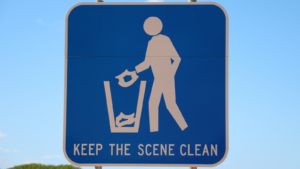
Shrinking Landfill Space
It’s startling to know that paper makes up about 5.76 Mega Tonnes of landfill waste. As Australians, we consume roughly 230 kg of paper products each year, adding to our landfill space problem. However, recycling paper offers a sustainable solution by:
- Saving Landfill Space: Recycling one tonne of paper can conserve up to 4 cubic metres of landfill space.
- Reducing Deforestation: Prevent the need to cut down 13-24 trees for milling.
- Cutting Down Pollution: Significantly reduce air and water pollution, reducing the water needed for manufacturing paper by 31,780 litres of water.
- Energy Efficiency: Uses 50% less energy than producing new paper, equating to only 4100 kilowatt-hours of electricity per tonne.
These findings by Australian Science and The National Waste Report 2022 highlights the importance of improving our paper recycling efforts, with a 62% resource recovery rate for paper and cardboard.
Curtailing Air and Water Pollution
Air and water, the very essence of our planet, are facing a tough battle against pollution. And guess what? The paper game is a big part of the problem. From producing those office reports to tossing out yesterday’s newspaper, it all adds up.
Let’s talk numbers – in Australia, we’re smashing it with paper recycling. Over 87% of paper, paperboard and cardboard is getting a second chance, thanks to recycling.
Since the ’90s, Aussies have upped their recycling game big time. We’ve gone from recycling 28% of our paper to a whopping 85% in 2016. This isn’t just good news for trees; it’s a win for clean water and air too. Recycling paper means way less pollution than making new sheets from scratch. So next time you’re about to chuck that paper in the bin, think recycle. It’s a small step for you, but a giant leap for our planet.
Fostering Sustainable Communities
The voyage towards sustainability originates at home, but it doesn’t end there. It extends to our communities, creating a ripple effect that fosters sustainable living on a larger scale. When we prioritise recycling and waste reduction, we’re not just making a personal commitment to sustainability; we’re fostering sustainable communities.
Reducing paper consumption, also known as saving paper, contributes to the fostering of sustainable communities by:
- Conserving trees
- Conserving energy
- Reducing waste
- Minimising carbon emissions
- Promoting digital alternatives
Communities that embrace, facilitate and foster these practices, like Net Waste, Planet Ark, Clean up Australia and Ultimo place a high priority on sustainability and showcase the practicality and advantages of these practices.
Practical Steps to Enhance Recycling Efforts
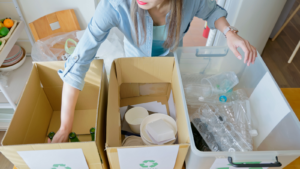
Recycling is a path that begins at home, spreads to the workplace, and permeates through our community. But how can we enhance our recycling efforts at these different levels? Let’s explore some practical steps we can take to make a significant impact on our recycling journey.
At home, we can avoid the use of plastic bags, clean and dry items before recycling, separate combined materials, purchase items in bulk to reduce packaging, and use cloth produce bags.
When it comes to recycling in the workplace, we can implement clear recycling policies, strategically place and well-label recycling stations, conduct regular audits, and promote recycling awareness.
At the community level, we can increase community participation and awareness through educational initiatives, well-organised community programs, and opportunities for individuals to contribute.
At-Home Recycling Best Practices
At home, recycling can be as easy as 1, 2, 3. The key lies in proper sorting and waste management. By using separate bins for various materials like:
- paper and cardboard
- plastics
- glass
- metal
But recycling is not just about separating and disposing. It’s also about reusing and repurposing. Old newspapers and magazines can be repurposed as wrapping paper or used as paper towel for windows and glass, giving materials a second purpose and reducing the volume of waste that requires recycling. Additionally, composting can be integrated into your waste management routine, enhancing the value of waste by converting it into valuable fertiliser.
Overcoming Challenges in Recycling
While recycling is a key step towards sustainability, it’s not without its challenges. One of the main hurdles is contamination. Items like plastic bags, Styrofoam, and medical waste can disrupt the recycling process, leading to increased costs and lower quality recycled materials. Properly sorting, cleaning, and drying recyclables is essential to address this issue.
Advancements in recycling technology and supportive policies also play a crucial role in enhancing recycling efficiency and encouraging participation.
In the next sections, we’ll delve deeper into the specifics of contamination challenges and explore why entrusting recycling to professional rubbish removal services is often the most effective solution.
Contamination Issues
Contamination in recycling acts as a roadblock, obstructing the seamless progress of the recycling journey. Common items that can cause contamination in recycling batches include:
- Plastic bags
- Styrofoam, foil and plastic linings
- Incorrectly shredded paper
- Broken glass
- Medical waste
These contaminants can lead to extended sorting time, elevated expenses, diminished output quality, and even the transformation of once perfectly recyclable items into added landfill waste.
However, every roadblock can be circumvented with the right strategies. Proper sorting is one such strategy. By separating recyclables from waste and cleaning and drying items before recycling, contamination can be significantly reduced.
The Solution: Leave it to Professionals

At Paul’s Rubbish Removal, we get it – managing waste effectively can be overwhelming for the typical Aussie household or business. With the increasing amounts of waste generated, finding the time and understanding to sort and recycle effectively can be a challenge. Whether it’s the confusion over recycling certain types of paper or the sheer volume of waste, it’s not always straightforward.
Audits in Australia’s five largest states reveal that the average recycling bin composition includes 48% paper and cardboard, 27% glass, 8% plastics, 3% metals, and a notable 14% contamination. The key to effective recycling is proper sorting and ensuring materials are clean before disposal.
This is where Paul’s Rubbish Removal comes in. Our professional team ensures that recyclables are not only sorted correctly but also handled in a way that maximises their recycling potential. By choosing Paul’s, you contribute to a cleaner environment and a more efficient recycling process. Let us help you make a difference – responsibly and effectively.
Summary
To sum up, recycling, particularly of paper and general rubbish, is a crucial step towards a sustainable future. Not only does it help conserve natural environments, mitigate climate change, and save energy and water, but it also reduces landfill space, curbs pollution, and fosters sustainable communities.
While challenges exist, with the right supportive policies/incentives and access to rubbish removal services, participating in the circular waste economy we can overcome these hurdles and enhance our recycling efforts.





